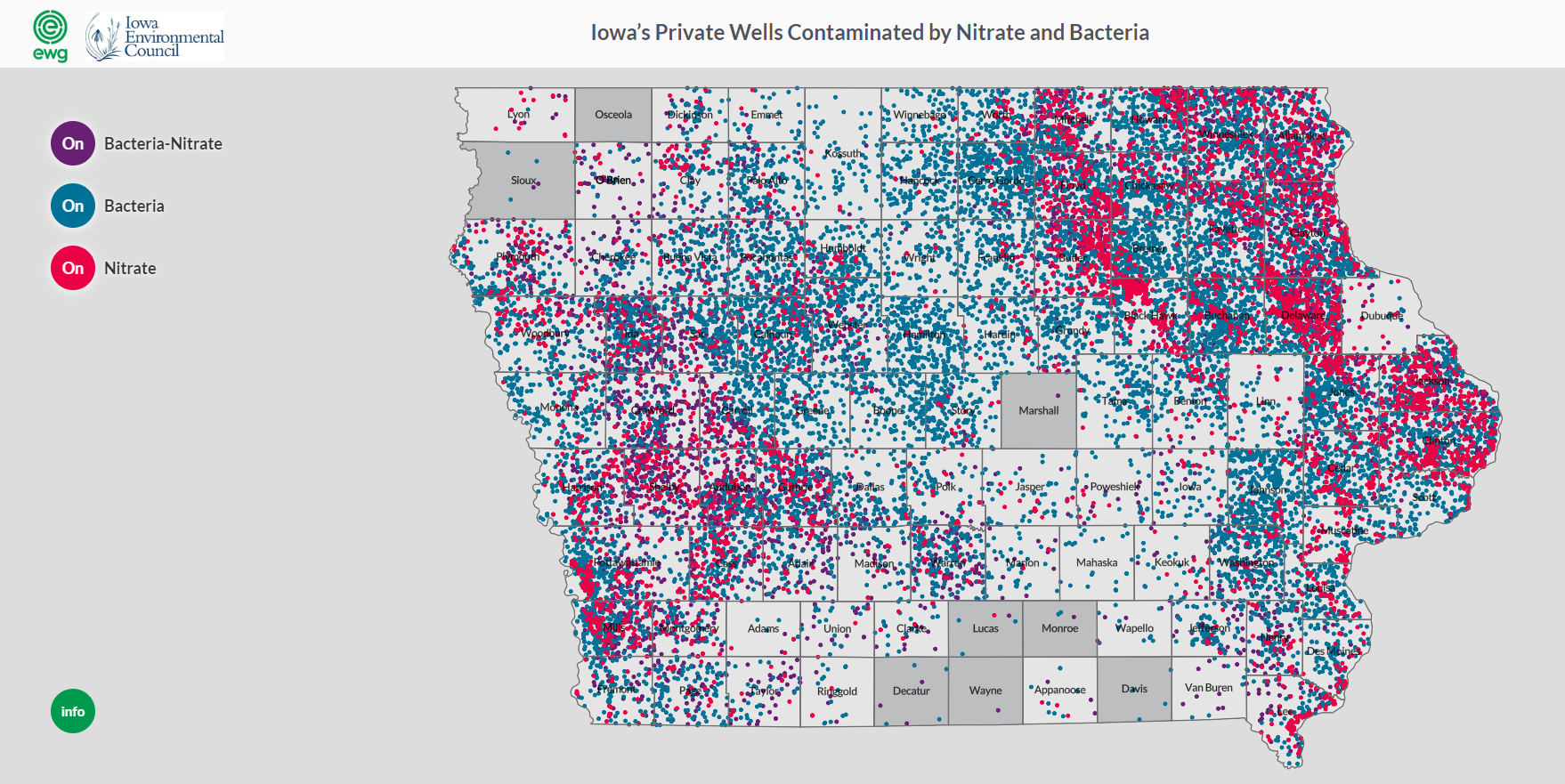3.5.1
What is Source Water?
Source Water is the term that is used to define the source or origin of drinking water. Source water can be derived from surface water, such as a river, stream, lake, or reservoir, or it can be from groundwater. The quality of Source Water can be influenced by many natural and human processes and activities. Historically, Source Water derived from surface water in Iowa has been more susceptible to contamination than Source Water derived from groundwater. However, Source Water derived from surface water sources can also be restored more quickly than Source Water derived from groundwater.
3.5.2
Source Water Protection
Protection of Source Water is vital to human health and an important economic consideration for individuals, municipalities, and businesses. Contamination of Source Water can be a slow process that happens over time or can be caused quickly as the result of an event. Although public wells are tested regularly for contaminants, private well owners in Iowa are not required to test their wells regularly. Source Water Protection is the act of preventing contaminants from entering drinking water sources. The State of Iowa has a Source Water Protection Program focused on municipal drinking water. It has three components 1) Phase I Assessment, 2) Source Water Protection Planning, 3) Implementation. More information about the Iowa Source Water Protection Program can be found here.
Education and information about Source Water issues are important to the health and economic well-being of Iowans. Unfortunately dissemination of Source Water information to the general public is arguably one of the most neglected aspects of Source Water Protection in Iowa. Information about how private and public wells function in relation to their source, how vulnerable Source Water is, information about how to test Source Water and which contaminants to test for, what processes and activities threaten Source Water, what a Source Water Capture Zone is, how to protect Source Water, and other Source Water issues, could save lives and positively impact Iowa’s economy.
3.5.3
Private Well Tests in Iowa
A recent investigation conducted by the Environmental Working Group and the Iowa Environmental Council (IEC) of Iowa DNR data private well data conducted between 2002 and 2017 found at least one test was positive for bacteria in 41% of wells, or 22,228 wells. It also found that the average concentrations of nitrate increased during the study period and many wells had very high nitrate averages, far above the 10 mg/L EPA drinking water standard. More than 1,000 wells had an average nitrate concentration above 30 mg/L, and 499 at or above 50 mg/L, with higher concentrations in more recent years. Because private well owners are not required to test their wells, the true scope of the problem is not yet understood. More information about this study can be found here.
3.5.4
Upper Iowa River Watershed Private Well Tests in Comparison to Iowa
Although the investigation found that the Upper Iowa River Watershed counties did not have the highest nitrate or bacteria tests in Iowa, the concentration of private wells contaminated by Nitrate and Bacteria in Northeast Iowa was higher than other areas of the state. (See map below, Iowa’s Private Wells Contaminated by Nitrate and Bacteria.) Because the Upper Iowa River Watershed is a karst watershed and watershed residents receive information and education about the interactions between surface and ground water from many different sources, the increased concentration of contaminated test results could be the result of increased testing compared to other areas of the state. However, the concentration of high Nitrate and Bacteria levels is consistent with surface and ground water testing that has occurred in Upper Iowa River Watershed Soil and Water Conservation District subwatershed projects, which can be found in the Subwatershed Story Map found here. The investigation also documents real results associated with private wells utilized for drinking water and thus makes consideration for Source Water quality a high priority for conservation professionals, partners and private and public well owners. Additional information about the Upper Iowa River Watershed Source Water is provided in the Story Map “Source Water in the Upper Iowa River Watershed” lower on this page.
3.5.5
Health Implications
Read about the health implications of nitrate consumption as associated with birth defects, cancers, thyroid problems and other health concerns in this article from the Iowa Environmental Council, which notes, “Iowans are particularly vulnerable to health impacts from nitrate pollution because concentrations of nitrate in Iowa’s streams and groundwater has been found to rank among the highest in the U.S., even higher than elsewhere in the Corn Belt and Northern Great Plains”. The IEC article calls attention to a 2016 Iowa Women’s Health Study (1986-2010) in which researchers “found a higher prevalence of bladder cancer among those (women) exposed to water with greater than 5 mg/L of nitrate-N for four or more years, compared to women with no comparable exposure”. It also calls attention to a 2010 study by the National Cancer Institute that correlates increased risk of thyroid cancer to consumption of public water supplies exceeding 5 mg/L nitrate-N over long durations.

